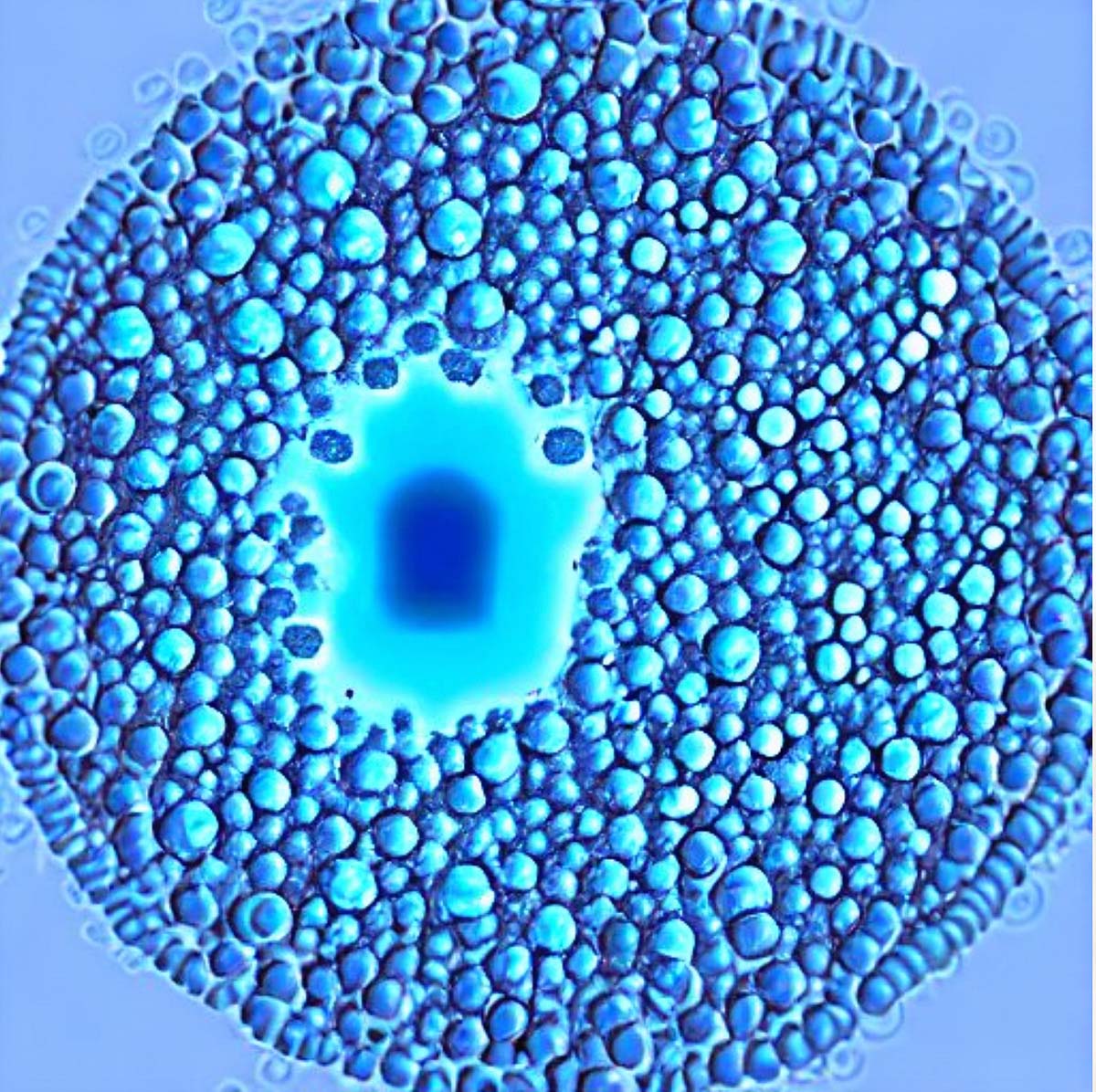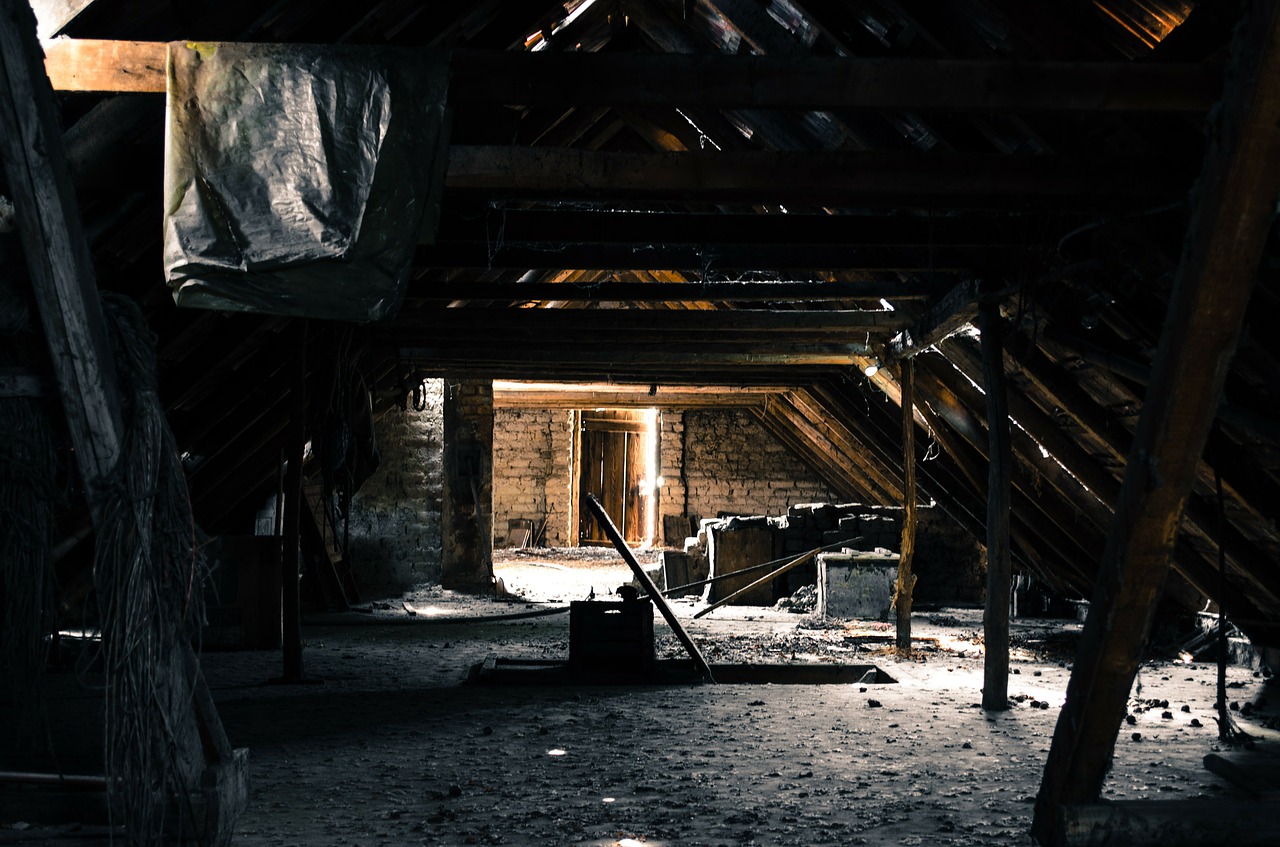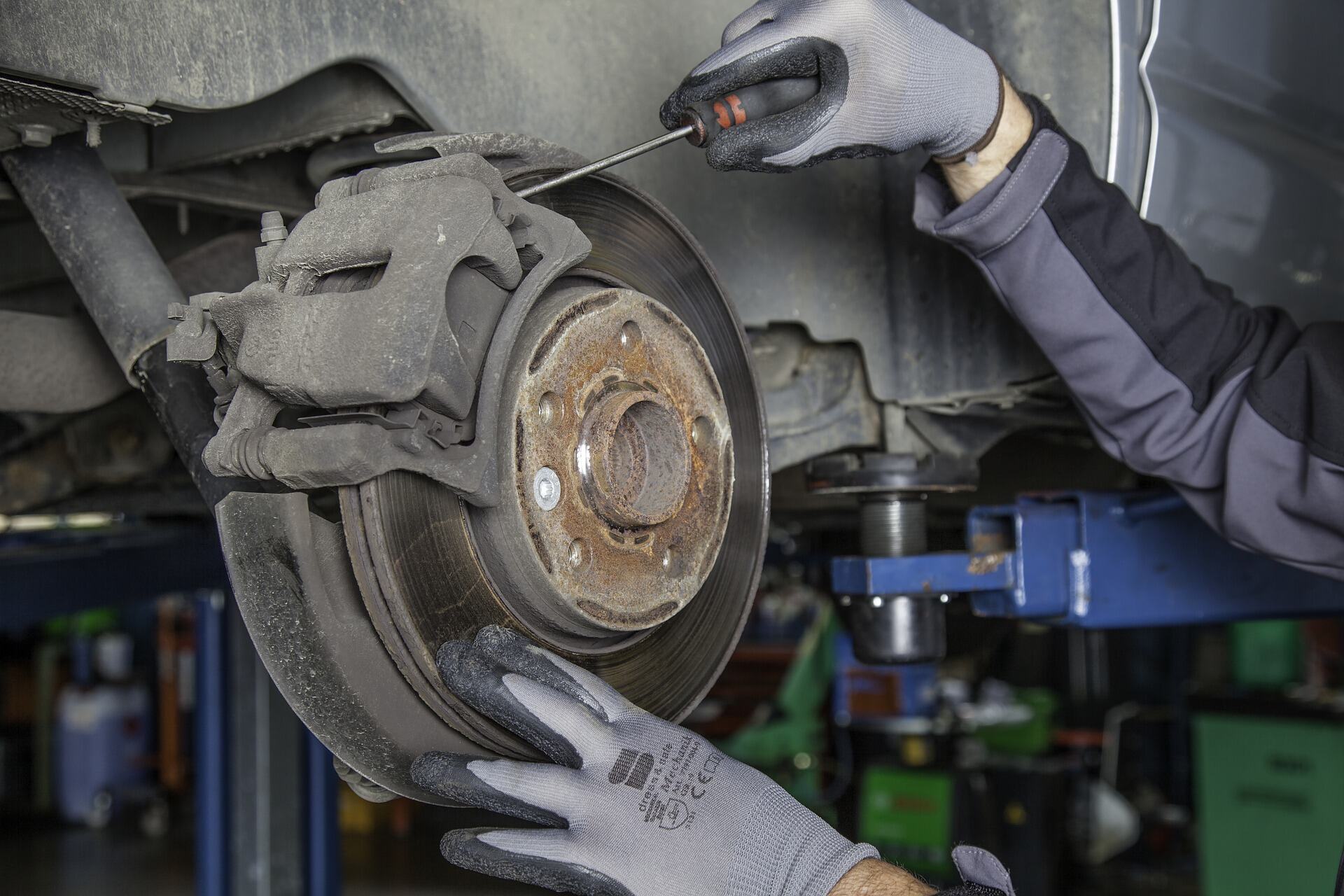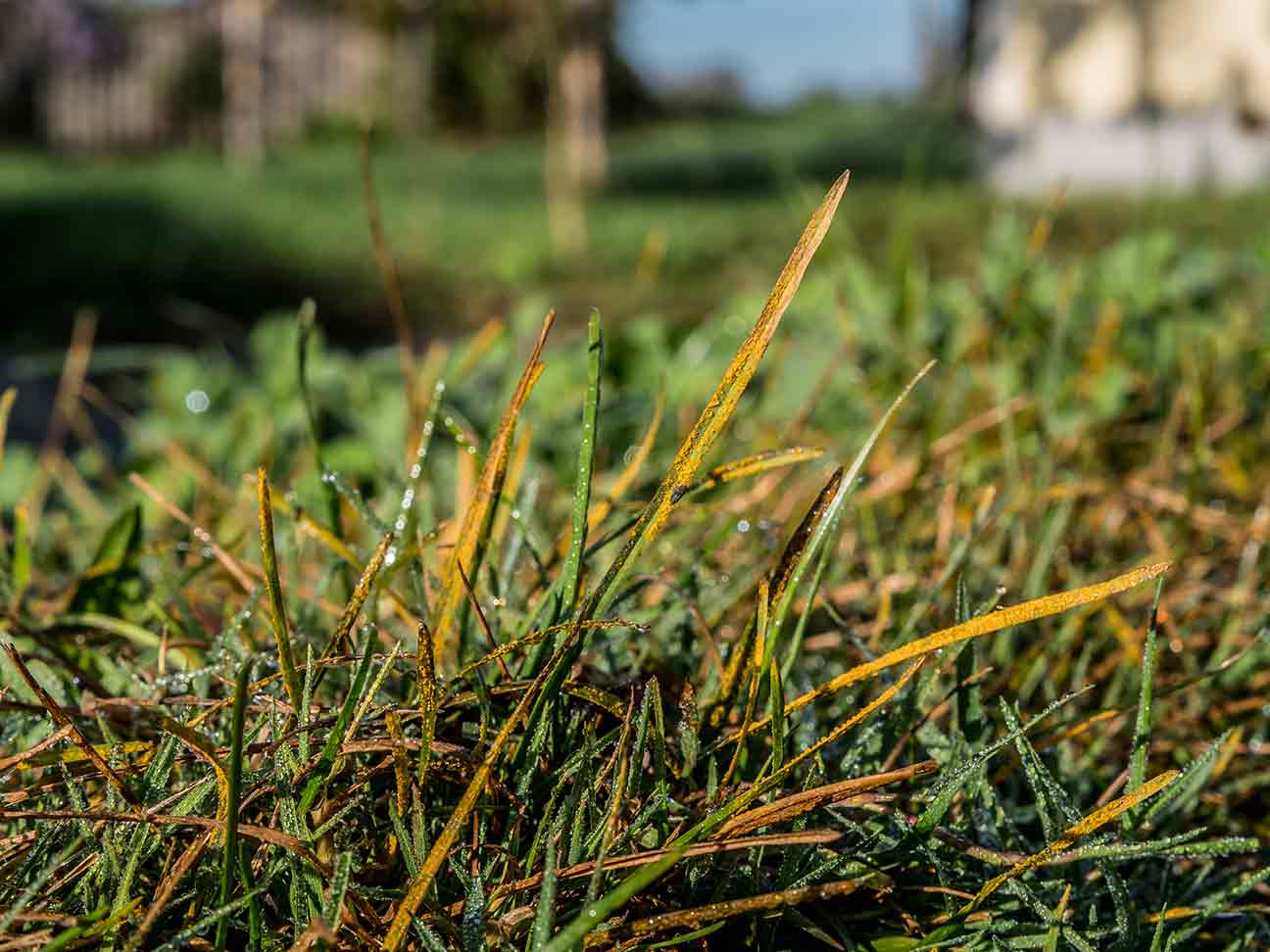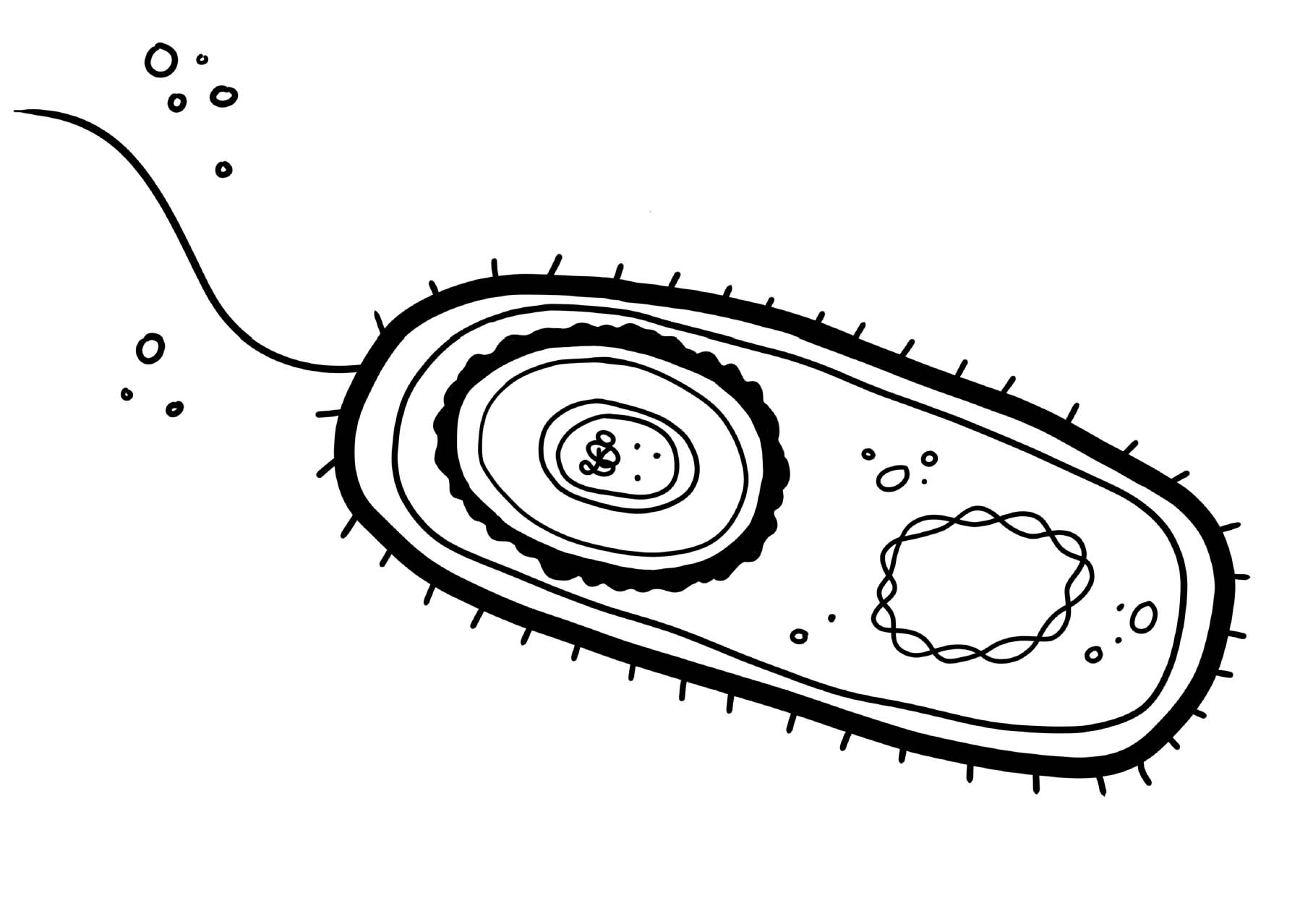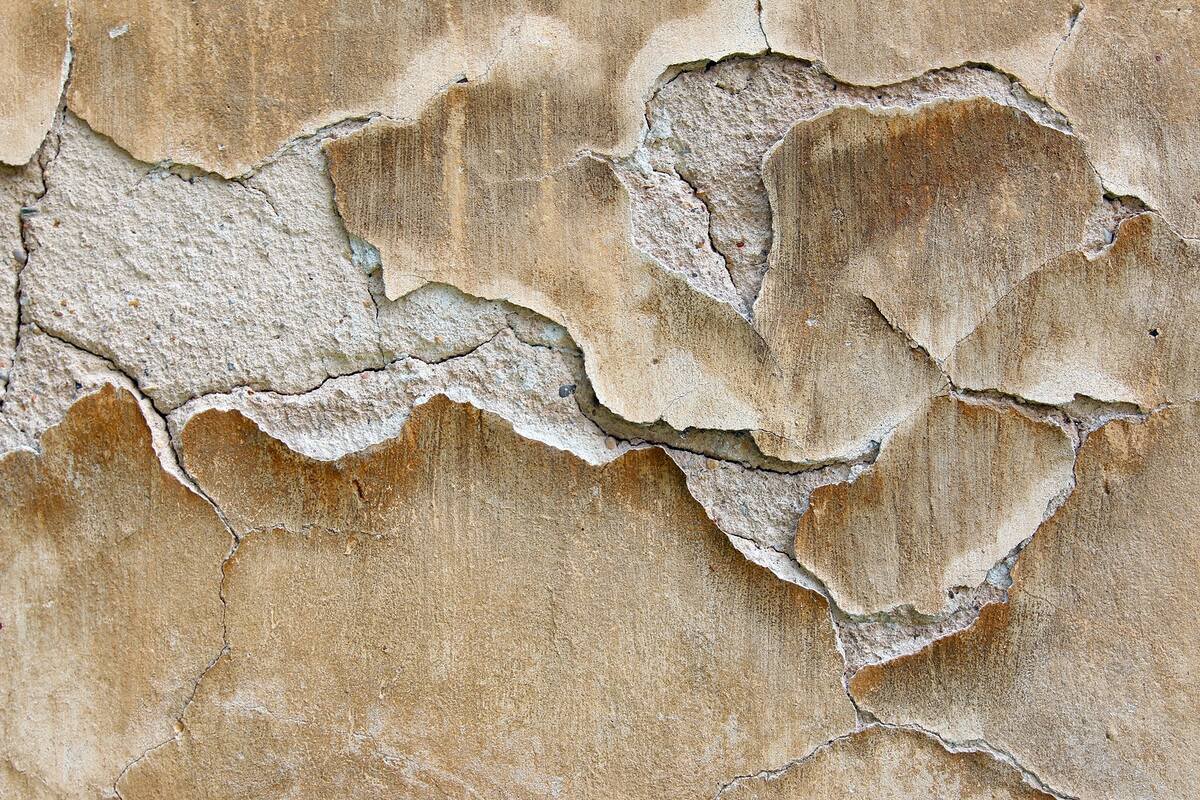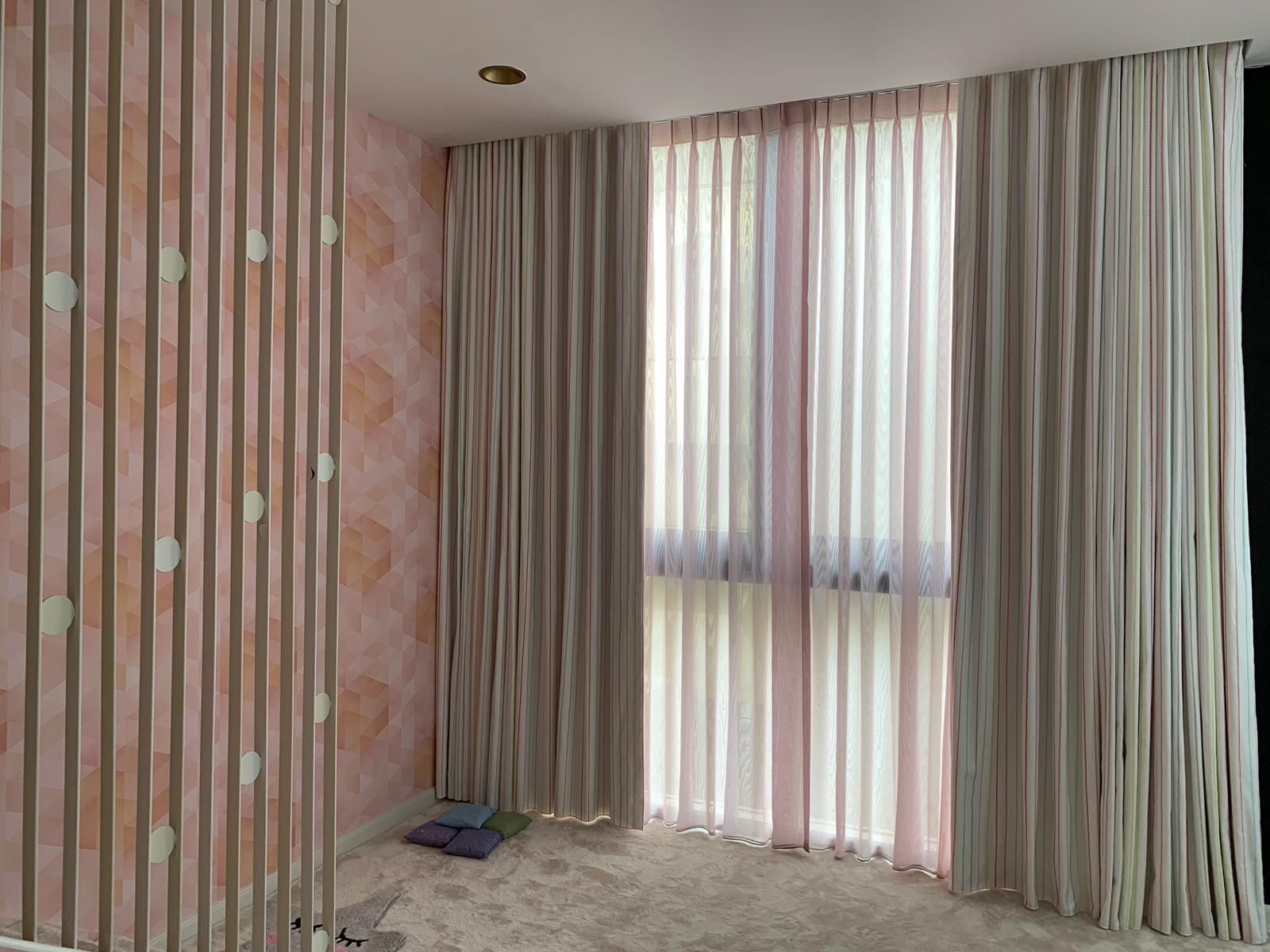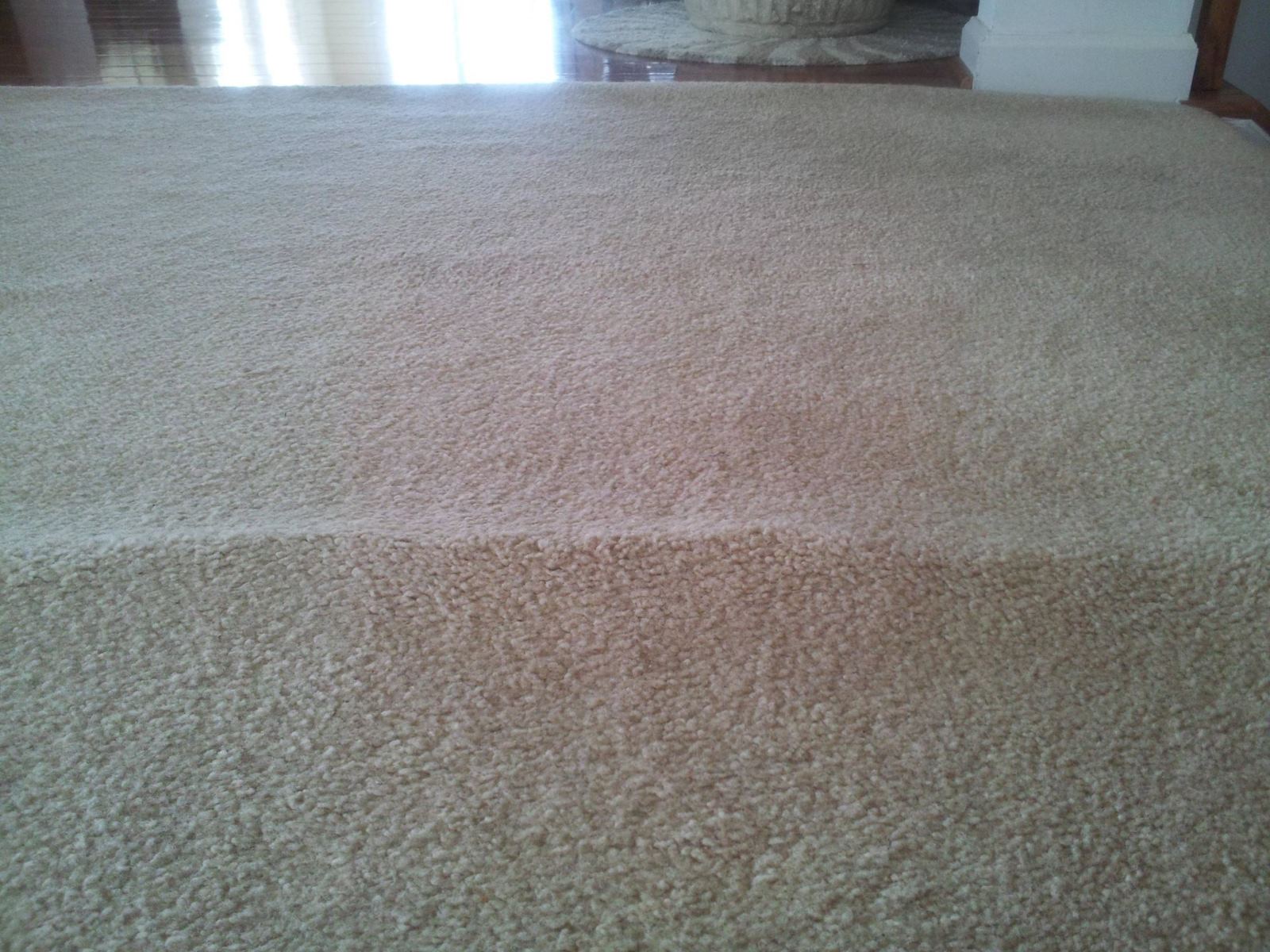

Articles
What Causes Carpet To Ripple
Modified: August 16, 2024
Learn about the causes of carpet rippling and how to prevent it with our informative articles.
(Many of the links in this article redirect to a specific reviewed product. Your purchase of these products through affiliate links helps to generate commission for Storables.com, at no extra cost. Learn more)
Introduction
Carpet rippling is a frustrating issue that many homeowners face. It occurs when the carpet begins to develop wrinkles or ripples, causing it to look uneven and unattractive. Not only does carpet rippling affect the overall appearance of a room, but it can also pose a tripping hazard and decrease the lifespan of the carpet. Understanding the causes of carpet rippling is crucial in order to prevent and address this problem effectively.
Carpet rippling is a common issue that can happen to both new and old carpets. It can occur in any room of the house, including living rooms, bedrooms, and hallways. While it may initially seem like a minor inconvenience, ignoring carpet rippling can lead to more significant problems in the long run.
In this article, we will explore the common causes of carpet rippling and provide solutions for addressing and preventing this issue. By understanding the root causes and implementing the appropriate solutions, you can keep your carpet looking smooth, beautiful, and safe for years to come.
Key Takeaways:
- Addressing the root causes of carpet rippling, such as poor installation and moisture issues, is crucial for restoring the carpet’s smooth appearance and preventing further damage. Professional restretching and high-quality padding are effective solutions to minimize the risk of rippling.
- Promptly addressing moisture-related issues, repairing damaged areas, and investing in high-quality padding can significantly reduce the likelihood of carpet rippling. Consulting with professionals for restretching and moisture control ensures the best outcomes for maintaining a beautiful and long-lasting carpet.
Read more: What Causes Carpet Moths
Definition of Carpet Rippling
Carpet rippling refers to the formation of wrinkles, waves, or ripples on the surface of a carpet. It occurs when the carpet becomes loose and starts to buckle or bubble up. Instead of lying flat and smooth, the carpet takes on an uneven and bumpy appearance.
This phenomenon can occur in carpets of various materials, including nylon, polyester, wool, or a blend of fibers. Though rippling can affect both wall-to-wall carpets and area rugs, it is more commonly observed in wall-to-wall installations.
Carpet rippling can range from subtle creases to more pronounced waves that are visible across the entire carpet. The severity of the rippling depends on several factors, including the cause of the problem and the length of time it has been left unaddressed.
It’s important to note that carpet rippling should not be confused with carpet shedding or pilling. Shedding occurs when loose fibers break away from the carpet and accumulate on the surface, while pilling refers to the formation of small balls or knots of fibers.
Carpet rippling is not only unsightly but can also pose safety risks. Tripping over the ripples can result in injury, especially for children, elderly individuals, or those with mobility issues. Additionally, furniture may not sit evenly on rippled carpet, potentially causing instability and damage to the furniture and the carpet itself.
Now that we have a clear understanding of what carpet rippling is, let’s explore the common causes behind this frustrating issue.
Common Causes of Carpet Rippling
Several factors can contribute to the formation of carpet rippling. Identifying the root cause is crucial for effectively addressing the issue and preventing it from recurring. Here are some of the most common causes of carpet rippling:
-
Poor Installation
One of the primary causes of carpet rippling is improper installation. If the carpet was not stretched and secured properly during installation, it can become loose over time, leading to rippling. This can happen when the installer fails to use adequate stretching techniques or doesn’t use a power stretcher to stretch the carpet tightly across the room. Additionally, using incorrect installation methods or using the wrong type of adhesive can contribute to rippling issues.
-
Humidity and Moisture
Excessive humidity in the environment can cause the carpet fibers to expand, leading to rippling. Moisture can seep into the carpet through various sources, such as spills, leaks, or high levels of humidity in the room. When the carpet gets damp, it loses its tension and can develop waves or ripples. This is particularly common in areas with high humidity levels, such as basements or bathrooms.
-
Read more: What Causes Carpet To Wrinkle
Wear and Tear
Over time, carpets naturally experience wear and tear due to foot traffic, furniture movement, or frequent cleaning. Constant use can cause the carpet to stretch or loosen, resulting in rippling. This is more likely to occur in areas with heavy foot traffic or where heavy furniture is frequently moved, such as living rooms or hallways.
-
Improper Handling
Improper handling of the carpet during installation, transportation, or moving furniture can lead to rippling. Mishandling the carpet, such as folding or bending it excessively, can cause the backing to weaken or the fibers to stretch, resulting in ripples or wrinkles.
-
Inferior Padding
The type and quality of padding used beneath the carpet greatly influence its stability and ability to resist rippling. Insufficient or low-quality padding can fail to provide adequate support and cushioning, leading to uneven pressure on the carpet. Over time, this can cause the carpet to develop ripples.
Now that we have identified the common causes of carpet rippling, let’s explore some solutions for addressing and preventing this issue.
Poor Installation
Poor installation is one of the primary causes of carpet rippling. When the carpet is not installed properly, it can easily become loose and develop wrinkles or ripples over time. Here are some common installation mistakes that can lead to carpet rippling:
- Inadequate stretching: Proper stretching is essential for ensuring that the carpet lies flat and smooth. If the carpet is not stretched tightly enough during installation, it can easily loosen and develop ripples. Using a power stretcher and following proper stretching techniques is crucial to prevent this issue.
- Incorrect installation methods: Using incorrect installation methods, such as not using a power stretcher or failing to follow manufacturer guidelines, can result in carpet rippling. It is important to hire an experienced and qualified professional installer who is knowledgeable about proper installation techniques.
- Wrong type of adhesive: Using the wrong type of adhesive or insufficient adhesive can contribute to carpet rippling. The adhesive should be suitable for the type of carpet being installed and should be applied evenly and adequately to ensure a secure bond.
If poor installation is the cause of carpet rippling, it is crucial to address the issue as soon as possible to prevent further damage and potential safety hazards. Here are some solutions for dealing with rippled carpet caused by poor installation:
-
Read more: What Causes Carpet Beetles
Professional reinstallation:
Hiring a professional carpet installer to properly stretch and reinstall the carpet is the most effective solution for addressing rippling caused by poor installation. A skilled installer will use a power stretcher to stretch the carpet tightly across the room, ensuring a smooth and secure installation.
-
Use of transition strips:
In cases where the carpet is rippled near transitions or doorways, the use of transition strips can help alleviate the problem. Transition strips are thin metal or wood strips that bridge the gap between different flooring surfaces, ensuring a smooth and seamless transition.
It is important to note that attempting to fix a poorly installed carpet on your own may worsen the situation and potentially damage the carpet further. Hiring a professional is a wise investment to ensure the carpet is properly reinstalled and rippling is effectively addressed.
Humidity and Moisture
Excessive humidity and moisture can also contribute to carpet rippling. When a carpet becomes damp or wet, the fibers can expand and lose their tension, resulting in ripples or waves. Here are some factors that can lead to moisture-related rippling:
- Spills and leaks: Accidental spills or water leaks can saturate the carpet fibers and padding, causing them to become damp. If not promptly and thoroughly dried, this moisture can lead to rippling.
- High humidity levels: Areas with consistently high humidity levels, such as basements or bathrooms, can create a damp environment that promotes carpet rippling. The moisture in the air can penetrate the carpet fibers, causing them to expand and develop ripples.
- Moisture from the subfloor: If the subfloor is damp or prone to moisture issues, it can seep into the carpet from below. This can occur in situations where there is no sufficient vapor barrier or if the subfloor has water damage or poor ventilation.
To address carpet rippling caused by humidity and moisture, consider implementing the following solutions:
-
Dry the carpet thoroughly:
If the carpet has become damp or wet due to spills or leaks, it is crucial to dry it thoroughly. Use absorbent towels or a wet/dry vacuum to soak up as much moisture as possible. Consider using fans or dehumidifiers to speed up the drying process and prevent the formation of ripples.
-
Read more: What Causes Television Static?
Address sources of moisture:
If the rippling is caused by high humidity levels or moisture from the subfloor, it is important to address the underlying issue. Use dehumidifiers or ventilation to reduce humidity levels in the room. Repair any leaks or water damage in the subfloor and ensure proper moisture barrier installation.
-
Professional drying services:
In severe cases where the carpet has been extensively soaked or when excessive moisture is present, it may be necessary to seek professional drying services. These professionals have specialized equipment and expertise to effectively dry and restore the carpet to its optimal condition.
By addressing humidity and moisture-related issues promptly and taking preventive measures, such as maintaining proper ventilation and controlling humidity levels, you can minimize the risk of carpet rippling caused by moisture.
Wear and Tear
Everyday use and normal wear and tear can also contribute to carpet rippling over time. As carpets age, they can gradually stretch or loosen due to foot traffic, furniture movement, and cleaning. Here are some factors related to wear and tear that can lead to carpet rippling:
- Foot traffic: Areas with heavy foot traffic, such as living rooms or hallways, are more prone to carpet rippling. The constant pressure and movement of people walking on the carpet can cause it to stretch and develop ripples.
- Furniture movement: Shifting or moving heavy furniture across the carpet can create tension and cause it to stretch unevenly. This can lead to the formation of ripples, especially if the furniture is not lifted properly or if furniture pads are not used to distribute the weight.
- Frequent cleaning: Some cleaning methods, such as using excessive water or moisture-based cleaning agents, can contribute to carpet rippling. If the carpet is not dried thoroughly or if it is cleaned too frequently, the excess moisture can cause the fibers to expand and develop ripples.
To address carpet rippling caused by wear and tear, consider implementing the following solutions:
-
Restretching the carpet:
Professional restretching can be a highly effective solution for correcting rippled carpets caused by wear and tear. Restretching involves pulling the carpet taut and resecuring it to the floor, eliminating the wrinkles and ripples. It is recommended to hire a professional who has experience with carpet restretching to ensure the best results.
-
Read more: What Causes Grass Tetany
Using furniture pads:
To prevent future rippling caused by furniture movement, consider using furniture pads or glides under the legs of heavy furniture. This helps distribute the weight and reduces the risk of creating tension and stretching in the carpet fibers.
-
Proper cleaning techniques:
When cleaning the carpet, be mindful of the cleaning methods and products used. Avoid excessive moisture and make sure to thoroughly dry the carpet after cleaning. Follow the manufacturer’s guidelines and consider professional carpet cleaning services that utilize low-moisture or dry-cleaning methods.
By addressing wear and tear issues promptly and taking preventive measures, you can extend the lifespan of your carpet and minimize the risk of rippling due to normal usage.
Improper Handling
Improper handling of the carpet during installation, transportation, or furniture movement can also lead to carpet rippling. Mishandling the carpet can cause the backing to weaken or the fibers to stretch, resulting in ripples or wrinkles. Here are some situations where improper handling can contribute to carpet rippling:
- Folding or bending the carpet: Excessive folding or bending of the carpet, especially along creases or sharp angles, can weaken the backing and cause the carpet fibers to stretch unevenly. This can result in ripples or wrinkles in the carpet once it is installed.
- Dragging heavy furniture: Dragging heavy furniture across the carpet instead of lifting it can create tension and pull the carpet fibers, leading to rippling. It is important to always lift heavy furniture and use furniture pads or glides to minimize friction and protect the carpet fibers.
- Improper storage: Improperly storing a rolled-up carpet for an extended period of time can lead to rippling when it is eventually unrolled. If the carpet is stored in an area with extreme temperature or humidity fluctuations, or if it is stored in a way that causes it to be tightly compressed, it can develop ripples when it is installed.
To address carpet rippling caused by improper handling, consider implementing the following solutions:
-
Professional restretching:
If the rippling is a result of improper handling during installation, professional restretching can help to remove the ripples and return the carpet to its proper form. A professional carpet installer will have the necessary skills and tools to stretch the carpet correctly, eliminating the unwanted ripples.
-
Read more: What Causes Moss On Lawns
Repair or replace damaged areas:
If specific areas of the carpet are damaged due to improper handling, such as folds or stretched fibers, it may be necessary to repair or replace those sections. This can involve cutting out the damaged portion and patching it with a matching piece of carpet or replacing the affected area altogether.
-
Proper handling techniques:
Ensuring proper handling techniques can help prevent future carpet rippling. When moving furniture, always lift it instead of dragging it across the carpet. When installing or unrolling a carpet, avoid excessive folding or bending and store it in a controlled environment to minimize the risk of rippling.
By addressing improper handling practices and taking precautions to handle the carpet with care, you can minimize the risk of rippling and keep your carpet in good condition.
Inferior Padding
The type and quality of padding used beneath the carpet play a crucial role in its stability and resistance to rippling. Inferior or inadequate padding can fail to provide the necessary support and cushioning, resulting in uneven pressure on the carpet and the development of ripples. Here are some scenarios where inferior padding can contribute to carpet rippling:
- Thin or worn-out padding: Using padding that is too thin or has worn out over time can lead to carpet rippling. Thin padding lacks the necessary support to keep the carpet smooth and flat, allowing it to shift and develop ripples. Similarly, worn-out padding may have lost its resilience and ability to provide proper cushioning, leading to uneven pressure on the carpet.
- Inadequate density or cushioning: The density and cushioning properties of the padding are important factors in preventing carpet rippling. If the padding has a low density or minimal cushioning, it may not be able to distribute weight evenly, causing pressure points on the carpet and resulting in ripples.
- Incorrect padding type: Choosing the wrong type of padding for the carpet can also contribute to rippling. Different carpets require specific types of padding to maintain their integrity and resistance to rippling. Using a padding that is not suitable for the carpet may compromise its stability and increase the likelihood of rippling.
To address carpet rippling caused by inferior padding, consider implementing the following solutions:
-
Replace the padding:
If the existing padding is thin, worn-out, or of poor quality, replacing it with a higher-quality padding is recommended. Choose a padding that is suitable for your specific carpet type and provides adequate density and cushioning. This will help distribute weight evenly and prevent the formation of ripples.
-
Read more: What Causes Moths In The Pantry
Consult with a professional:
If you are unsure about the right type of padding to use, it is advisable to consult with a professional carpet installer or a flooring specialist. They can assess your carpet and recommend the appropriate padding that will offer optimal support and minimize the risk of rippling.
Investing in high-quality padding is essential for maintaining the longevity and visual appeal of your carpet. The right padding will provide the necessary cushioning and stability, ensuring a smooth and ripple-free carpet surface.
Solutions for Carpet Rippling
Dealing with carpet rippling can be frustrating, but there are solutions available to address and prevent this issue. The appropriate solution depends on the underlying cause of the rippling. Here are some common solutions for dealing with carpet rippling:
-
Restretching the Carpet
If the carpet is rippling due to poor installation or wear and tear, restretching is often the most effective solution. Restretching involves pulling the carpet taut and resecuring it to the floor using a power stretcher. This process eliminates the wrinkles and ripples, returning the carpet to its original smooth and flat state. It is recommended to hire a professional carpet installer with experience in restretching to ensure the best results.
-
Addressing Moisture Issues
If excessive humidity or moisture is causing the carpet to ripple, it is important to address the underlying moisture problem. This may involve repairing leaks, improving ventilation, or using dehumidifiers to control indoor humidity levels. Additionally, drying the carpet thoroughly after spills or cleaning is crucial to prevent moisture-related rippling.
-
Read more: What Causes Washer Not To Spin
Repairing Damaged Areas
In situations where the carpet has suffered damage from improper handling or other factors, it may be necessary to repair specific areas. This can involve cutting out the damaged section and patching it with a matching piece of carpet or replacing the affected area altogether. Consulting with a professional can help determine the best repair method for your specific situation.
-
Using High-Quality Padding
Choosing the right type and quality of padding is essential for preventing carpet rippling. Using high-quality padding that offers adequate density and cushioning can help distribute weight evenly and minimize the risk of ripples. It is important to select a padding that is suitable for your carpet type and consult with professionals if needed.
Implementing these solutions can help rectify existing rippling issues and prevent future occurrences. Additionally, practicing proper carpet care, such as regular cleaning, avoiding dragging heavy furniture, and addressing any spills or leaks promptly, can help maintain the carpet’s integrity and minimize the risk of rippling.
Remember, in situations where the rippling is severe or persistent, it is recommended to seek professional assistance. Professional carpet installers and repair specialists have the expertise and tools to effectively address the problem and restore your carpet to its original condition.
Restretching the Carpet
Restretching the carpet is a highly effective solution for addressing rippling caused by poor installation or wear and tear. Over time, carpets can become loose and develop wrinkles or ripples, impacting their appearance and durability. Restretching involves pulling the carpet taut and resecuring it to the floor using a power stretcher, eliminating the wrinkles and ripples and restoring the carpet to its original smooth and flat state. Here are some key points to consider when restretching the carpet:
- Hire a professional: Restretching a carpet requires expertise and specialized tools. Hiring a professional carpet installer or a certified flooring specialist is recommended, as they have the necessary skills and experience to perform the job effectively. They will assess the extent of the rippling and use a power stretcher to stretch and reposition the carpet properly.
- Proper assessment: Before restretching, the professional will inspect the carpet and identify the areas with rippling. They will determine the cause of the rippling, whether it’s due to poor installation, wear and tear, or other factors, to ensure the best approach for restretching.
- Power stretching: Unlike simple stretching techniques, power stretching involves using a power stretcher, which is a specialized tool that grips the carpet and applies significant tension. This method ensures that the carpet is stretched uniformly across the room, eliminating any excess slack and wrinkles. The professional will carefully adjust and secure the carpet to ensure a smooth and taut surface.
- Trim excess carpet: In some cases, restretching may result in excess carpet material. The professional may need to trim off the excess carpet and carefully reattach it along the edges or seams for a seamless finish.
Restretching the carpet not only removes ripples and wrinkles but also helps extend the lifespan of the carpet. By restoring its proper tension, restretching prevents further damage that can occur due to ripples, such as accelerated wear or premature fiber breakage.
It is important to note that restretching should be performed by professionals to ensure the best results. Attempting to restretch the carpet on your own without the proper tools and techniques can lead to further damage or an unsuccessful outcome. Hiring a professional is a worthwhile investment that will save you time, effort, and potential mistakes.
Be sure to consult with a trusted carpet installer or flooring specialist to assess the rippling and determine if restretching is the appropriate solution for your carpet. Their expertise and experience will ensure that the restretching process is carried out correctly, restoring your carpet to its optimal condition.
Addressing Moisture Issues
Moisture-related problems, such as spills, leaks, or high humidity, can contribute to carpet rippling. When the carpet becomes damp or wet, the fibers can expand and lose their tension, resulting in the development of ripples. Addressing moisture issues is crucial to prevent further rippling and potential damage to the carpet. Here are some key steps to consider when addressing moisture issues:
- Identify the source of moisture: Determine the cause of the moisture problem, whether it’s a leaky pipe, a spill, or high humidity levels in the room. This will help you better understand the extent of the issue and identify the necessary steps to rectify it.
- Promptly clean up spills: Accidental spills should be cleaned up promptly to prevent moisture from seeping into the carpet fibers. Blot the spill with a clean cloth or paper towel, avoiding rubbing, as this can push the liquid deeper into the carpet. If necessary, use a mild detergent and water solution to gently clean the affected area, and then ensure it is thoroughly dried.
- Repair leaks and sources of water: If the carpet rippling is caused by a persistent leak or water seepage, it is essential to address the underlying issue. Repair any leaking pipes, fix roof leaks, or seal any areas where water can seep into the room. This will minimize the exposure of the carpet to moisture and prevent further rippling.
- Control indoor humidity: High humidity levels can contribute to carpet rippling. Use dehumidifiers or air conditioners to reduce indoor humidity and maintain a more stable environment. Adequate ventilation can also help remove excess moisture from the air, preventing it from affecting the carpet.
- Thoroughly dry the carpet: If the carpet becomes damp due to spills, leaks, or high humidity, it is crucial to dry it thoroughly. Use fans, open windows, or dehumidifiers to increase air circulation and promote faster drying. Allow sufficient time for the carpet to dry completely before walking on or placing furniture back on it.
Addressing moisture issues promptly helps prevent further rippling and potential damage to the carpet. It is important to note that if the rippling caused by moisture is severe or persistent, it may be necessary to seek professional assistance. Professional carpet cleaning and restoration services have specialized equipment and expertise to assess and address moisture-related issues effectively.
By promptly addressing moisture issues, cleaning up spills, repairing leaks, and controlling indoor humidity levels, you can minimize the risk of carpet rippling due to moisture. This will help preserve the integrity and appearance of your carpet and prevent further costly repairs or replacements.
Read more: What Causes Pink Grass
Repairing Damaged Areas
If specific areas of the carpet have suffered damage due to factors like improper handling, wear and tear, or accidents, it may be necessary to repair those areas to eliminate rippling. Repairing damaged areas helps restore the carpet’s appearance and structural integrity. Here are some key steps to consider when repairing damaged areas:
- Assess the extent of the damage: Carefully examine the damaged areas to determine the severity and scope of the rippling. Assess whether the damage is localized or if it extends to a larger portion of the carpet.
- Consult with a professional: If you are unsure about the repair process or if the damage is extensive, it is advisable to consult with a professional carpet repair specialist. They will assess the damage and recommend the appropriate repair method.
- Patch damaged areas: In cases where a specific section of the carpet is damaged, patching is often the best solution. This involves cutting out the damaged portion and replacing it with a matching piece of carpet. The carpet repair specialist will carefully trim and shape the replacement piece to seamlessly blend with the surrounding carpet.
- Replace heavily damaged sections: In situations where the rippling or damage is more extensive, removing and replacing the affected section of the carpet may be necessary. This involves cutting out the damaged section entirely and replacing it with a new piece of carpet.
- Ensure proper installation: Proper installation is crucial when repairing damaged areas. The carpet repair specialist will use appropriate techniques and tools to secure the patched or replaced section, ensuring it is tightly and securely attached to the floor.
It is important to note that repairing damaged areas of the carpet is a delicate process that requires skill and experience. Hiring a professional carpet repair specialist is recommended, as they have the expertise and tools to execute the repairs effectively and achieve seamless results.
By promptly addressing and repairing damaged areas, you can prevent further rippling and restore the appearance and functional quality of your carpet. Consulting with a professional ensures that the repair process is carried out correctly, saving you time, effort, and potential mistakes.
Using High-Quality Padding
The type and quality of padding used beneath the carpet play a crucial role in its stability, comfort, and resistance to rippling. Choosing high-quality padding is essential for maintaining the longevity and integrity of your carpet. Here are some key points to consider when using high-quality padding:
- Select the appropriate padding: Different types of carpets require specific types of padding. Consult with a professional or refer to the carpet manufacturer’s guidelines to determine the recommended padding for your particular carpet. The right padding will provide optimal support, cushioning, and resistance to rippling.
- Choose padding with adequate density: The density of the padding is an important factor in preventing rippling. Higher-density padding provides better support and helps distribute weight evenly across the carpet, minimizing the risk of ripples. Choose padding with a density appropriate for the anticipated foot traffic and usage of the area.
- Ensure sufficient cushioning: Quality padding should also offer sufficient cushioning to make the carpet feel comfortable underfoot. It helps absorb impact and provides a plush feel, enhancing the overall experience. However, be careful not to select padding that is too thick or soft, as it can cause uneven pressure and potentially lead to rippling.
- Consider moisture-resistant padding: Moisture can contribute to carpet rippling, so selecting moisture-resistant padding can help minimize the risk. Moisture-resistant padding is treated to repel water, preventing it from seeping into the carpet and causing issues. This is particularly important in areas prone to spills or high humidity levels.
- Professional installation: Proper installation of the padding is crucial for its effectiveness. A professional carpet installer will ensure that the padding is installed evenly, with no gaps or overlaps. They will also select the appropriate thickness and density for your specific carpet and ensure a seamless transition between sections of padding.
Investing in high-quality padding ensures the stability, comfort, and longevity of your carpet. It helps minimize the risk of rippling by providing the necessary support and cushioning to maintain a smooth and even surface.
When selecting and installing padding, it is advisable to consult with professionals, such as carpet installers or flooring specialists. They have the knowledge and expertise to guide you in choosing the right padding for your carpet and to perform the installation correctly.
By using high-quality padding, you can significantly reduce the likelihood of carpet rippling and enhance the overall performance and lifespan of your carpet.
Conclusion
Carpet rippling is a common issue that can affect the appearance and durability of your carpet. Understanding the causes behind carpet rippling is crucial for effectively addressing and preventing this problem. Poor installation, humidity and moisture, wear and tear, improper handling, and inferior padding are among the key factors that can contribute to carpet rippling.
To tackle carpet rippling, various solutions are available. Restretching the carpet is a highly effective solution for addressing rippling caused by poor installation or wear and tear. By pulling the carpet taut and resecuring it using a power stretcher, it eliminates wrinkles and ripples, restoring the carpet to its original smooth state.
Addressing moisture issues is essential to prevent further rippling. Promptly cleaning up spills, repairing leaks, and controlling indoor humidity levels can help minimize the risk of moisture-related rippling. Drying the carpet thoroughly after moisture exposure is also crucial.
Repairing damaged areas is necessary when specific sections of the carpet have suffered rippling or other damage. Cutting out damaged portions and patching or replacing them with new carpet sections can restore the carpet’s appearance and integrity.
Using high-quality padding is a preventive measure that helps reduce the risk of carpet rippling. Selecting the appropriate type and density of padding provides stability, comfort, and proper weight distribution, minimizing the chance of developing ripples in the carpet.
In conclusion, addressing the root causes of carpet rippling and implementing the appropriate solutions will not only enhance the aesthetic appeal of your carpet but also improve its longevity. For best results, it is advisable to consult with professionals who can assess the specific situation and provide expert guidance.
With proper care, maintenance, and timely attention to carpet rippling, you can enjoy a smooth, beautiful, and long-lasting carpet in your home for years to come.
Frequently Asked Questions about What Causes Carpet To Ripple
Was this page helpful?
At Storables.com, we guarantee accurate and reliable information. Our content, validated by Expert Board Contributors, is crafted following stringent Editorial Policies. We're committed to providing you with well-researched, expert-backed insights for all your informational needs.
